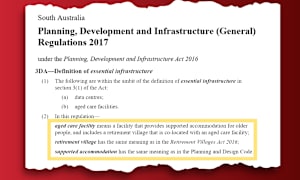The original TV wiring is known as RIBBON wiring, which is usually brown and flat with
2 thin wires in it. Most of us will know it as antenna wire, but is the type found in most
village more than 20 years old (completed before 1987).
AIRCORE was introduced next to handle the higher frequency SBS broadcast and was the
TV wiring standard until 1999.
QUADSHIELD COAX (black in colour) then became the standard specification in response
to the introduction of Foxtel, and remains the standard for digital TV and pay TV.
Edition #29
villages.com.au - Australias No. 1 village web site and magazine
WEEKLY
INDUSTRY
UPDATE
FROM
villages.com.au
The Village Manager
Because it is considerably more expensive, many electricians and developers failed to
install coax, falling back on aircore. It is present in villages, apartment blocks and even
office blocks just 3 years old. It appears to work at a satisfactory level but its performance
actually deteriorates over distance, say more than 30 metres from the aerial. So people
on the top floor have good reception but people at lower levels or further away from the
village office/antenna have terrible reception.
The second installation failure with aircore is LOOP PLATES, where the second TV outlet in
a home has been looped from the first and the signal will not carry the extra distance.
CAT5 & CAT6 is the blue data cabling seen networking computers. CAT6 is the new
standard for data - which will be required for kiosk services.
FIBRE OPTICS is suited to new developments, especially where the cabling has to run over
distance. Some installations combine fibre optics and coaxial (known as HFC or hybrid
fibre coax). Some installations utilise fibre to the home (known as FTTH or FTTP).
For rewiring in existing developments/villages it is rare for fibre optics to be utilised.


The three aged care bombshells from Senate Estimates
Last week’s Senate Estimates hearing – held just three weeks before sweeping reforms roll out – gave politicians the chance to ask Government heavyweights the questions they’re getting from constituents and to interrogate the once-in-a-generation changes.









